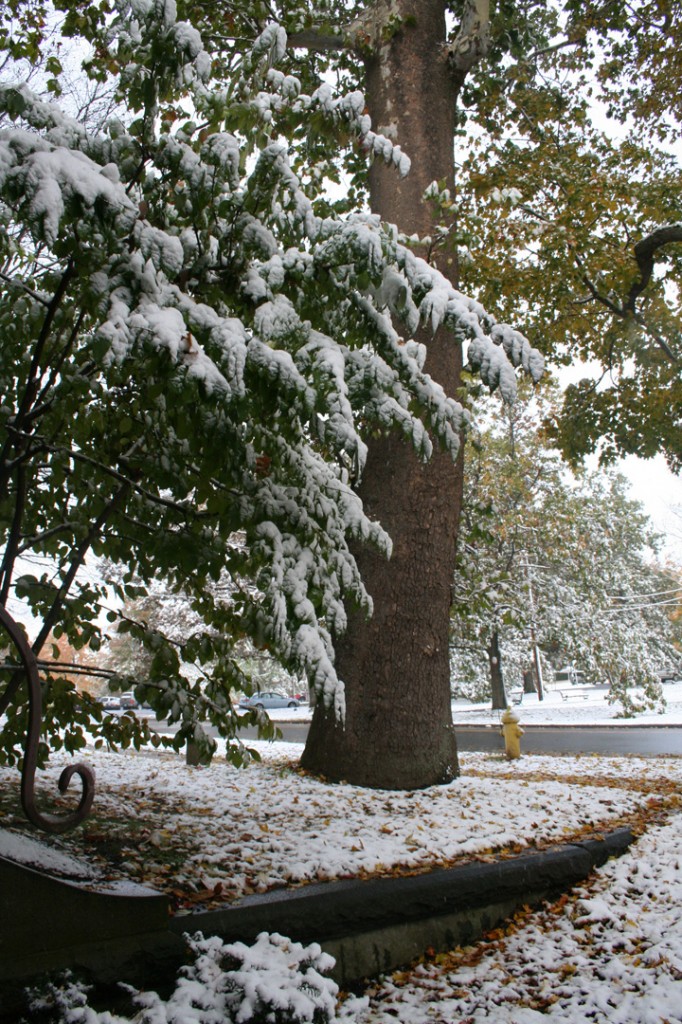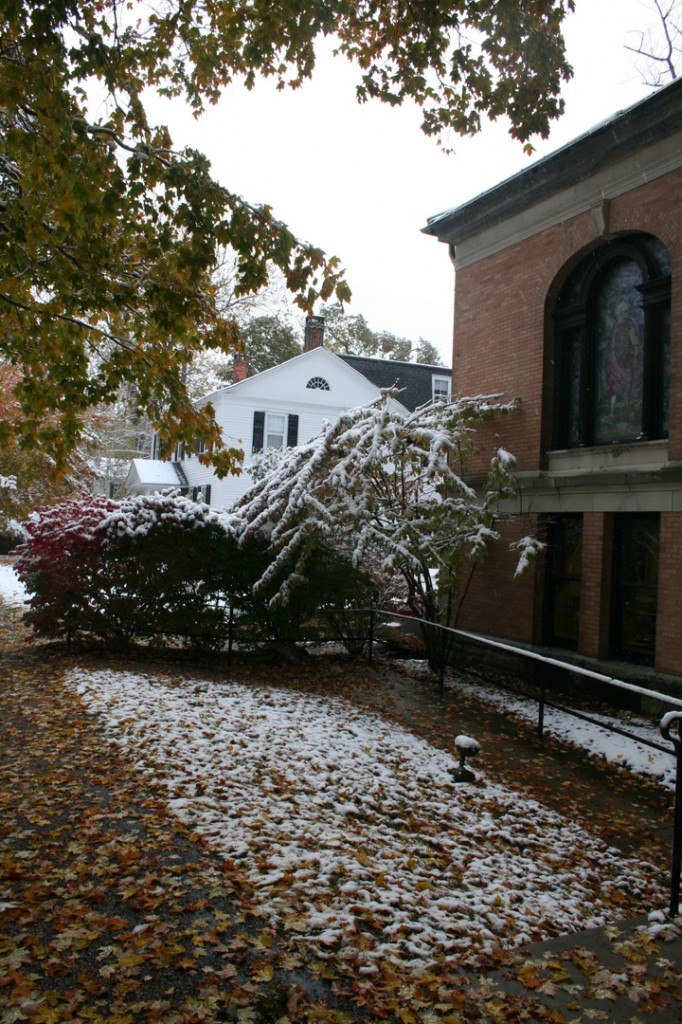As many of our readers know, the Historical Society closes from the end of November through mid-April to the public. The research library remains open during this time but the Tapping Reeve House & the Litchfield Law School and the exhibits at the Litchfield History Museum close for the winter.
This may give the perception that the staff is resting their feet on their desks and lazily checking email but in fact winter is a very busy time of year for the Historical Society. Closing the exhibit galleries allows the staff the staff to break down and install the main changing exhibition.
Each year the Society opens a new temporary exhibition. The show runs the duration of the time the museum is open to the public for the year, focuses on a local topic and uses objects and archives from the Society’s collection to illustrate the themes and ideas of the exhibit.
Each December the previous exhibit is taken apart and the room prepared for the new exhibit to be installed.
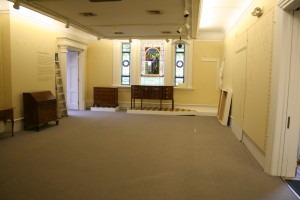
In November 2009, the Historical Society closed the highly acclaimed exhibition To Please Any Taste: Litchfield County Furniture & Furniture Makers, 1780-1830.

Slowly the furniture was moved out of the room and the stands and decorations piled into one corner.
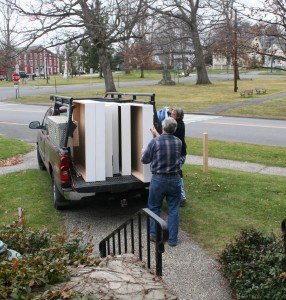
The Historical Society relies on the help of Guy Livolsi and Tom Rinkus to assist the staff in moving platforms and cases in and out of the exhibit spaces. Here they are taking a load of platforms over to the Tapping Reeve House where they are stored until needed for the next exhibition

As different rooms are worked on, materials are piled in unused spaces until they can be placed in the appropriate gallery or taken to storage.
After all of the objects and archives are removed from the exhibit, the room is given a fresh coat of paint. The needed cases and platforms are brought in and arranged. Below you see the History Gallery where the 2010 exhibition Goods for Sale! Cash, Credit & Trade in Litchfield, 1790-1850 will be installed over the next six weeks. The walls have been painted a vibrant red color and the platforms are ready to be placed in the room.
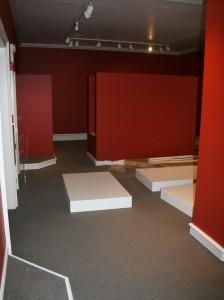
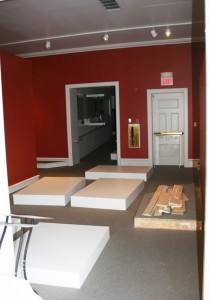
The museum hires John Kilbourn, a local professional painter, to paint the galleries each season.
The Historical Society hosts an annual Preview Party for members. This year the event will be held on Friday, April 16th at 6:30pm. If you would like to attend this sneak preview of the exhibit please become a member of the Society today to receive your invitation. The exhibit will be open to the public on Saturday, April 17, 2010 and remain on view through the end of November.
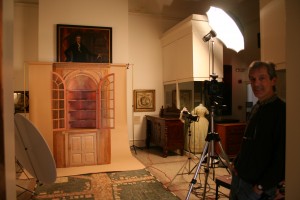 David Stansbury at right in the winter of 2008 as the Historical Society prepared for the publication of the exhibition catalog To Please Any Taste: Litchfield County Furniture & Furniture Makers, 1780-1830
David Stansbury at right in the winter of 2008 as the Historical Society prepared for the publication of the exhibition catalog To Please Any Taste: Litchfield County Furniture & Furniture Makers, 1780-1830 David as he adjusts an image on his computer
David as he adjusts an image on his computer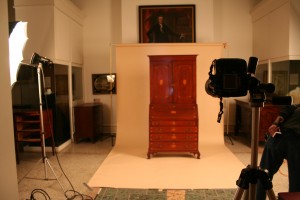 The photographer sessions are often held in the Liggett Gallery of the Litchfield History Museum. The large gallery provides ample space for the equipment
The photographer sessions are often held in the Liggett Gallery of the Litchfield History Museum. The large gallery provides ample space for the equipment